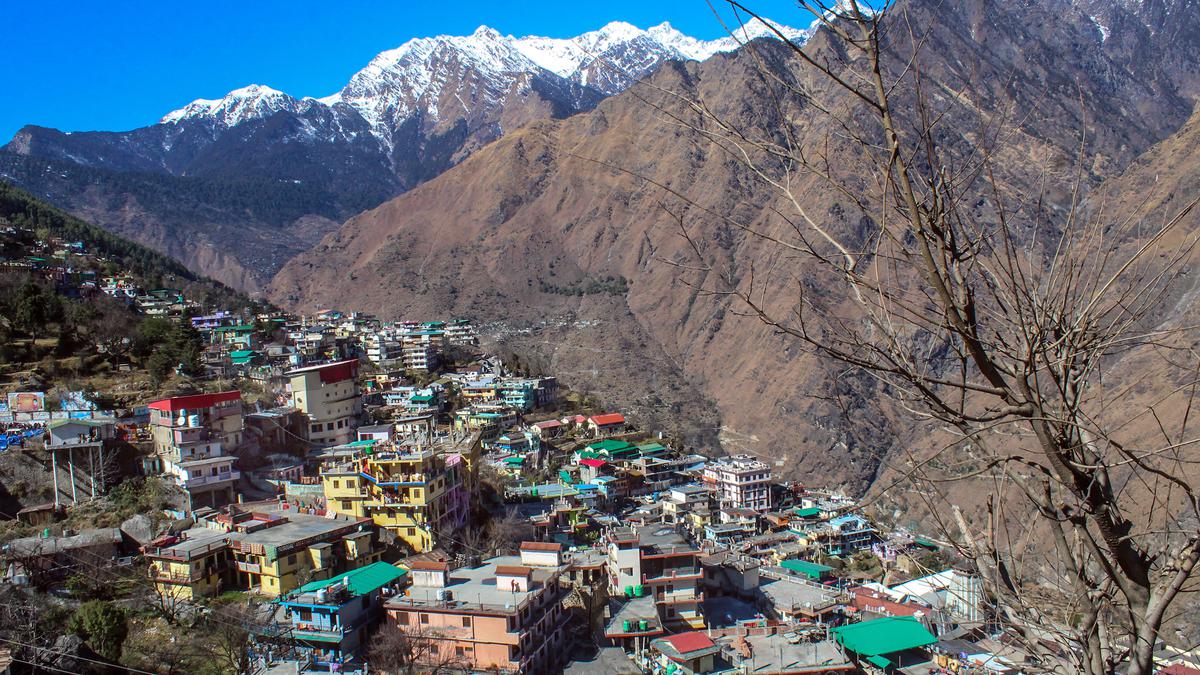
After Joshimath, wide cracks in Uttarkashi village cause panic
The Hindu
Wide cracks have appeared in the roads and walls of several homes in Mastari village here, nearly 300 km from Joshimath, which caught national attention earlier this year when thousands of people had to be evacuated to safer locations due to land subsidence.
Wide cracks have appeared in the roads and walls of several homes in Mastari village in Uttarkashi, nearly 300 km from Joshimath, which caught national attention earlier this year when thousands of people had to be evacuated to safer locations due to land subsidence.
The quick response team of the disaster management authority rushed to the village to inspect the cracks and asked people there to be alert.
Also Read | Joshimath residents still stranded as Char Dham Yatra begins
While land subsidence is an old problem in the village, rains last Saturday led to the widening of cracks at people’s homes, with water beginning to stream out of the crevices, causing panic among the villagers, Satyanarayan Semwal, the head of Mastari, said.
"Landslides are happening continuously in the village but the authorities are not paying as much attention to Mastari as it deserves," Mr. Semwal said.
The problem of land subsidence began in Mastari village after the earthquake of 1991, locals say.
In 1997, geologists conducted a survey in the village and suggested that the villagers be moved out to a safer location besides recommending some other protective measures.

“Writing, in general, is a very solitary process,” says Yauvanika Chopra, Associate Director at The New India Foundation (NIF), which, earlier this year, announced the 12th edition of its NIF Book Fellowships for research and scholarship about Indian history after Independence. While authors, in general, are built for it, it can still get very lonely, says Chopra, pointing out that the fellowship’s community support is as valuable as the monetary benefits it offers. “There is a solid community of NIF fellows, trustees, language experts, jury members, all of whom are incredibly competent,” she says. “They really help make authors feel supported from manuscript to publication, so you never feel like you’re struggling through isolation.”

Several principals of government and private schools in Delhi on Tuesday said the Directorate of Education (DoE) circular from a day earlier, directing schools to conduct classes in ‘hybrid’ mode, had caused confusion regarding day-to-day operations as they did not know how many students would return to school from Wednesday and how would teachers instruct in two modes — online and in person — at once. The DoE circular on Monday had also stated that the option to “exercise online mode of education, wherever available, shall vest with the students and their guardians”. Several schoolteachers also expressed confusion regarding the DoE order. A government schoolteacher said he was unsure of how to cope with the resumption of physical classes, given that the order directing government offices to ensure that 50% of the employees work from home is still in place. On Monday, the Commission for Air Quality Management in the National Capital Region and Adjoining Areas (CAQM) had, on the orders of the Supreme Court, directed schools in Delhi-NCR to shift classes to the hybrid mode, following which the DoE had issued the circular. The court had urged the Centre’s pollution watchdog to consider restarting physical classes due to many students missing out on the mid-day meals and lacking the necessary means to attend classes online. The CAQM had, on November 20, asked schools in Delhi-NCR to shift to the online mode of teaching.









